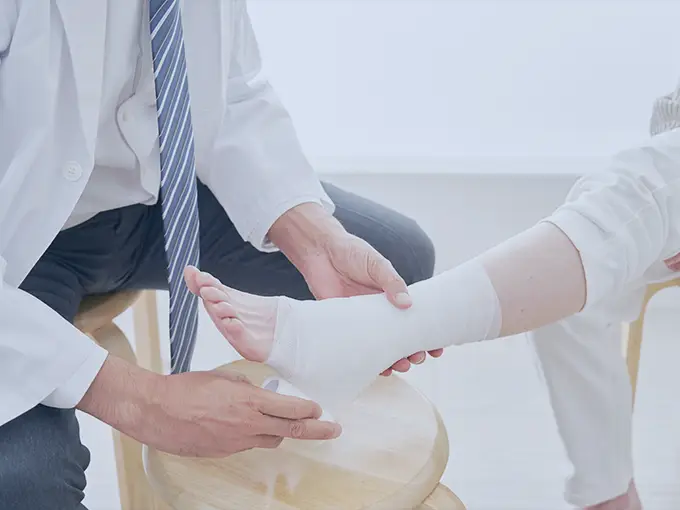Foot and Ankle Injuries
Over 1 million people every year experience foot and ankle injuries that land them in the hospital. From minor foot conditions to complex joint problems, foot and ankle injuries can range in severity and treatment plans. The award-winning podiatrists at SynergyHealth Foot & Ankle have the experience, training and compassion to effectively treat your injury and get you back up and on your feet in no time.


Common Foot and Ankle Injuries
At SynergyHealth Foot & Ankle, we manage anything from complicated open ankle and rearfoot fractures to toe fractures both conservatively and surgically.
- Ankle dislocation
- Ankle fracture
- Ankle sprains
- Foot fracture
- Foot arch injuries
- Plantar Fasciitis
If you’ve recently experienced an injury to your foot or ankle, reach out to us immediately. Our team can schedule you to see one of our podiatrists right away to ensure proper and immediate care.

Signs of Foot and Ankle Injuries
Foot and ankle injuries often present themselves with immediate swelling, bruising, and pain. For example, ankle dislocation is a severe injury where separation occurs between your bones and ankle joint. This results in difficulty walking or putting any amount of weight on your foot or ankle. Severe dislocation could require emergency surgery and a splint to hold your ankle in place as it recovers, while less severe cases can heal with time and pain management tools.
Other common injuries, like foot and ankle fractures, are direct injuries to the bone. A foot fracture can be the result of a sports injury or slip or fall. Other types of foot fractures, like stress fractures, smaller cracks in the bone, are potentially caused by overuse in repetitive activities like running.
Sprains, on the other hand, can be painful but don’t typically require surgery or immediate care. Sprained foot treatment includes applying ice to the injury, keeping your leg and foot elevated, and lots of rest and limited motion.
Preventing Foot and Ankle Injuries

- Wear properly fitting and supportive footwear, especially while exercising.
- Get fitted for custom foot supports.
- Use ankle braces and supports to protect weak ankles or recently sprained ankles.
- Regularly exercise and stretch your feet and ankles to keep the muscles strong.
- Avoid overtraining and mixing up your exercise routine.
- Listen to your body and see a doctor if you’re experiencing pain.
Frequently Asked Questions
What are the most common causes of foot and ankle injuries?
Dislocations, fractures, and sprains are some of the most common foot and ankle injuries. We also see a lot of patients with Plantar Fasciitis, which is the inflammation of the plantar fascia, the fibrous tissue running along the arch of your foot.
When should I go to the doctor for a foot injury, ankle pain, or a broken toe?
We recommend contacting us as soon as you experience a foot or ankle injury. Even if it is a minor sprain, our experts can help you determine the severity of the injury and the proper steps to recover and reduce pain. More severe injuries can get worse the longer you wait, especially fractures and broken bones, which can lead to the early development of arthritis.